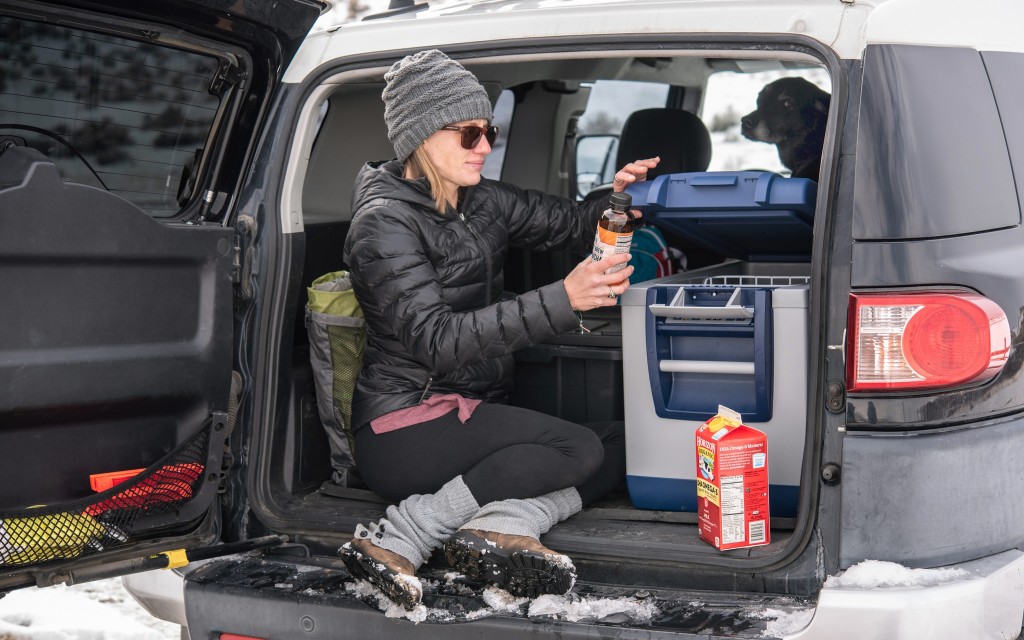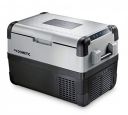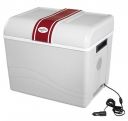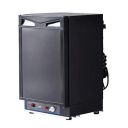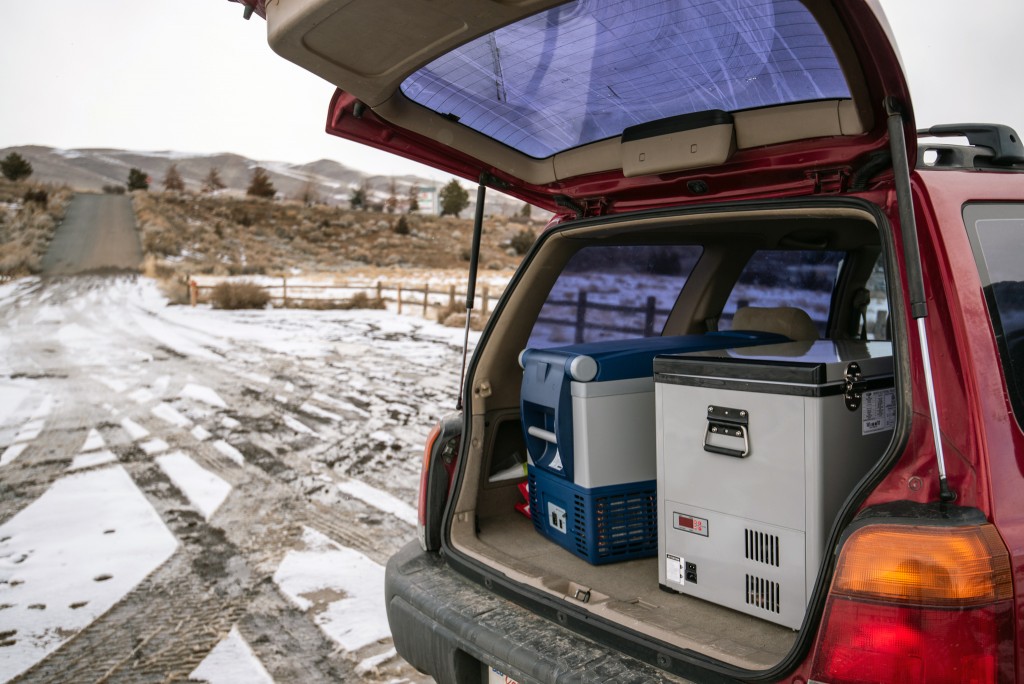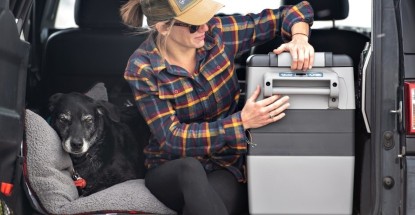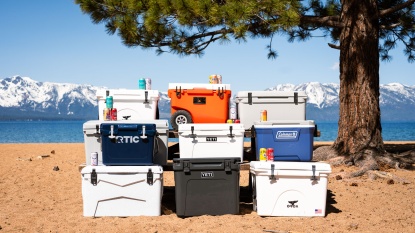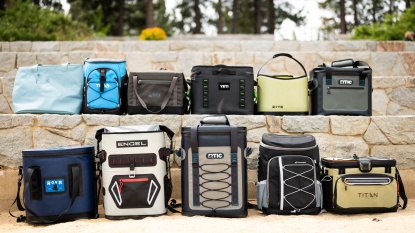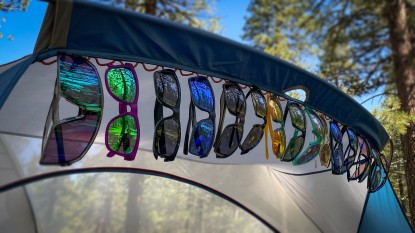Not so long ago, you might not have even heard of a powered cooler, and now it seems everyone is picking one up to up their game in the camping world, take on epic road trips, or straight-up move into a built-out van. So what are these powered coolers anyway? Why do they cost so much? And do you need one? Those are all great questions, friend! We've been extensively testing some of the best powered coolers for several years running, and we're here to help you decide the best solution to keeping your life cool.
What Kind of Cooler Do You Need?
There are many reasons you might need to keep things cold when you don't have a handy fridge nearby. You may want to take a bunch of steak and eggs on your weekend camping trip, need to get ice cream home from the store in July, need to supply twenty-five friends with beer for the game, or you may need to live off solar power or a generator. However, there are many ways beyond a fridge that can help you keep your food and beverages nice and frosty, and a powered cooler is just one way. Depending on the scope of your chilling needs, you may find yourself using one of three types of coolers.
Soft Coolers
Hard Coolers
Hard coolers come in a range of prices (just like their range of sizes) and might be all you need to keep your items on ice. They're a great solution for feeding lots of folks, spending a weekend in the woods, and keeping fresh food fresh for longer in that summer heat. If this sounds like your perfect match, take a gander at our hard cooler review.
Powered Coolers
Powered coolers can really help you cut the cord on your old dependency on ice and get off the grid in your vehicle. Whether you're looking to take a cross country road trip this summer, adventure in your RV or van for more than a night or two, live completely off the grid, or you're simply sick of buying ice and don't mind keeping the cooler in the car, then a powered cooler just might be your new best friend.
Saying Yes to Electricity
Alright, so you've decided you need a powered cooler in your life, or you wouldn't still be reading this article. The next step is wading through the incredible variety of electric iceboxes you might purchase to determine which one is right for you. Let us help simplify this process. There are three main types of powered coolers that you could bring home.
12V Compressor Models
Most of the compressor coolers are quite heavy though, and only become heavier once full. Conveniently, many can be permanently mounted and wired directly to a battery, meaning they can become a permanent fixture in your teardrop trailer or the back of your semi rig. These models tend to be quite expensive compared to thermoelectric coolers and can range over $1000. However, they are unmatched in temperature control and can handily keep your raw meat and eggs under the 40ºF threshold recommended by the USDA. If having eggs and sausage for breakfast, mayonnaise and sliced meat for lunch, and steak for dinner is what you're after, you want a compressor model to be sure those delicacies won't be accompanied by food poisoning.
Thermoelectric Models
Cold or hot, lighter weight, and hundreds of dollars cheaper — why would anyone get anything else, you might ask. Well, these little guys have some drawbacks, namely in that they can only cool relative to ambient temperature, and typically max out at about 40 degrees Fahrenheit lower than ambient. While on a 75ºF spring day, this will get you within the USDA-approved 40ºF range, on a truly hot day in mid-summer when the temperature spikes above 90 or 100ºF, your cooler is only getting down to 50-60ºF at the lowest. Depending on how often you're getting in and out of your cooler and if it's in the sun at all, this temperature could be even higher. This is a significant limitation if you're hoping for steaks on day 4 of this July's state park family reunion!
And yet these coolers still have plenty of uses. Many of them can be filled with ice like a standard cooler, and the electricity extends the life of that ice. If you simply want a crisp apple, decadent dark chocolate, or chilled white wine at the end of a long day, a thermoelectric cooler can certainly give you that. And if you find yourself living a long drive from your favorite grocery store or restaurant, a cool box like this can help you bring that ice cream home on a hot August afternoon or to arrive as a Friday night hero in mid-winter with hot, steaming takeout.
The two factors most influential to your decision as to which type of powered cooler is right for your life are also the two biggest differences between compressor models and thermoelectric models: ambient temperature and desired internal temperature. If you plan to use your powered cooler for items that normally need to be stored in a traditional refrigerator to stay edible, you'll need the added temperature control that only a compressor-powered cooler can give you. Additionally, if you plan to use your cooler in very hot conditions (think 85º+F), a thermoelectric model just isn't going to be able to keep your food very cold. But if you don't need to store things like milk, eggs, and raw meat, or will be mostly using your device in temperatures below 80ºF, a thermoelectric cooler will get you by and save you some money and back break.
Three-Way Absorption Models
Other Things to Think About
So at this point, you've probably got a pretty good idea as to what general type of cooler is going to work for you. But the journey of decision-making isn't over! There are other considerations that should influence your ultimate choice in which powered cooler you ultimately bring home and maybe eventually love so much you even give it a name.
Power Consumption
Before you plug something into your car battery, you should know how much power it will draw compared to what your car battery can handle. While pretty much anything equipped with a 12V DC cord is designed to be run off a vehicle battery, some devices are so power-hungry that they'll leave you stranded after just a few hours if you're not constantly recharging the battery. You can keep your battery charged the old-fashioned way — by turning on your car — or if you have a separate battery just for running fancy electrics off the grid, you can recharge it with a generator or set of solar panels.
All powered coolers, no matter what type, draw more power while they're cooling than they do in a steady state when they're monitoring the internal temperature and waiting to cool again when it gets too warm. Thermoelectric models never reach a steady state and are always cooling, which over time will draw more power the harder they have to work. Most compressor-powered models also have battery-monitoring capabilities that thermoelectric coolers don't offer. This setting can be adjusted to turn off the unit when your battery reaches a certain level, which helps to not only prolong the life of your battery but also to start your car when you want to leave. This is a great setting for your battery, but if you're not paying attention to your cooler when it shuts off, it could result in a bunch of food spoiling before you recharge the battery enough to turn your cooler back on.
Additionally, some compressor coolers are equipped with various energy-saving options, allowing them to run more efficiently when you need them to. Typically these settings are only effective at keeping food appropriately cool in ambient temperatures of 85-90ºF or less (though some models boast up to 110Fº!), but this varies based on the specific model. Energy-saving settings can cut energy use almost in half, again based on the particular cooler — great for solar-users on cloudy days or for continuous use through hot nights. Some coolers also have an option to quickly cool your contents, which can help save that melty ice cream you forgot in the sun for another delicious snack time. This may use more energy, depending on the model, but may be worth it for food preservation.
Internal Capacity
When it comes to powered coolers, size makes a big difference. The larger the inside of the cooler, the more work (read: energy) it will take to keep contents cool. That being said, 12V compressors are fairly energy-efficient, and coolers using this mechanism generally range from 35-90 liters. This kind of capacity is great for van life or keeping a variety of food, condiments, beverages, and leftovers cool for several people over many days. Some models come in even larger sizes and may even have two different temperature zones — just like your fridge/freezer back home.
Thermoelectric coolers work harder to maintain their cool temperatures. Therefore, they tend to come in smaller packages, from personal-sized to that of a medium cooler, around 45 L. A smaller inside space is easier to keep cool, so filling a thermoelectric cooler with cold food or bags of ice, rather than empty space around just a few items, will help keep all your contents cooler. These smaller sizes are handy for a single person's lunch, a couple of folks' road trip sandwiches and snacks, or some refreshing beverages for your buddies at the end of a hot day.
Where Will You Put It?
While this seems like a question mostly regarding the weight and size of your cooler, it actually goes beyond that. The vibration caused by normal car movement - let alone driving for miles on unmaintained dirt roads — can wreak havoc with the moving parts in a powered cooler. In general, thermoelectric models are less durable than their compressor cousins, though they are also more easily placed on a car seat where they're better protected from bumps in the road. Compressor models have more moving parts to be damaged or knocked out of place as you make your way off the beaten path, and need more care and consideration in their placement.
Many compressor models can be permanently mounted behind a truck seat or inside a little trailer, which can help protect them from bouncing around unnecessarily. Some are specifically rated to be able to operate at angles of up to 30º or even 45º, making them more amenable to rocky roads or even operating on certain boats. If you plan to fix your cooler to the floor, how the lid opens becomes an additional factor to consider. Some models open on the long edge, like a trunk, while others open along the short end, making for a long lid and a farther reach to items in the back. A few models can have the lid completely removed to aid loading and unloading, or even reverse the direction it opens if that works better for your space.
Unlike a traditional cooler, these powered coolers (obviously) need to be plugged in. Some models come with nice long cords that can easily run from the DC plug between your front seats to the back of your suburban with no problem. Others have such short cords that they have to live right behind the front seat while powered. You can always purchase a cord extension to place your cooler wherever you want, but that's another thing to buy. And if you ever want the option to use your cooler at home or in a hotel room, you'll need either the AC cord or a DC to AC adapter. Some models come with this already included and some offer it as an additional item — or not at all.
Nifty Features and Accessories
Like a lot of gadgets you can buy, powered coolers can have a bunch of interesting features that make them more (or less) appealing. Most (but not all) thermoelectric models can be reversed to provide heat — a great feature to keep that casserole piping hot on your way to the school potluck in the bitter Midwestern winter. Some powered coolers have drains and plugs that can both aid cleaning and create a potential risk of leakage after some wear and tear. Certain compressor models can connect to external displays, allowing you to read and control their temperature from the driver's seat of your pickup while your cooler is snug as a bug in the back. Some extra fancy compressor coolers can be similarly controlled using a handy app, bypassing the extra step of purchasing and installing an external display. Many larger models also feature internal lights that help you see what you're grabbing from the depths. And a few coolers even have wheels, which comes in handy when you're trying to move a fully-loaded icebox.
And if all that isn't enough, you can add extra insulation to many powered coolers by purchasing a special insulation or transit bag. This added layer can help keep cold in and heat out on the hottest days, thereby saving precious energy all summer. Some compressor models also have slide mounts available, so you can slide the whole unit out from the back of your car or under your boat bench to gain access to its contents. We wish all appliances could be this handy!
Just like your fridge at home, your powered cooler will perform better if you put in things that are already cold rather than room temperature food as we did during parts of our testing. You can hedge your bets with a thermoelectric cooler by adding ice — or ice in sealed containers if the model you've brought home isn't rated to have liquid directly in it. By prepping your food or the cooler itself, you'll use less energy right off the bat and be able to maintain a lower temperature more efficiently.
No matter what powered cooler you decide to upgrade your life with, each model is specific and unique, and we strongly recommend reading the entire instruction manual before using it. Unlike most appliances that have a pretty standard set of usage parameters, powered coolers have a wide range of "normal" settings and requirements that you should be intimately familiar with before setting out on your next adventure. And no matter what your normal is, we hope our experience and testing help you identify the right powered cooler for your needs.


